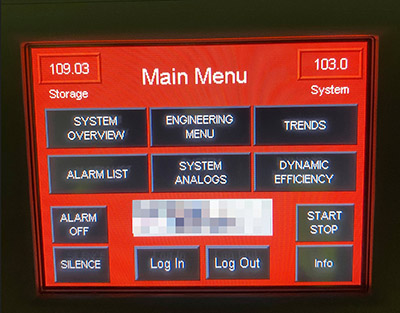
When controlling screw compressors, the goal is to try to keep all the running compressors fully loaded except one. And the one running partly loaded (called trim) is selected as the one having best part load efficiency characteristics.
When there are only two or three compressors in a group, it is quite easy to set them up manually with cascaded pressure bands. However, as the number of compressors in the group increases, it gets more difficult to meet the stated goal.
On the upper end of the operating pressure band is the maximum rating of the compressors; on the lower end is the lowest allowable system pressure. As we try to cram more and more compressor setpoints in this narrow window, the settings get closer and closer, resulting in some undesirable overlap.
To solve this problem, compressor controllers are used to logically select the next compressor to load or unload within a single compressor band. This allows any number of compressors to run, meeting the goal of optimum control. There are many compressor controllers available on the market, ranging from very simple to very complex and sophisticated.
All of these controls suffer from a significant flaw — not in the controller itself, but in the behavior of the operator. Most controllers require the operator of the compressors to understand the workings of the controller. And due to staff turnover and high workloads there, is often little time to read the manual to learn the operation. And this is where the problem began for the controller in Fig. 1.
The controller shown is one of the best offered the market today, yet it is not properly controlling the connected compressors. Why? Because the control has been deliberately disabled. The compressor operator simply could not understand the control functions — so he turned it off, causing the compressors to run inefficiently. Purchasing an expensive controller is one thing, but “best practices plants” need to ensure there is proper training in place, so operators can learn how to use available tools.
Filed Under: Components Oil Coolers, Compressed Air Technologies, Pneumatic Tips